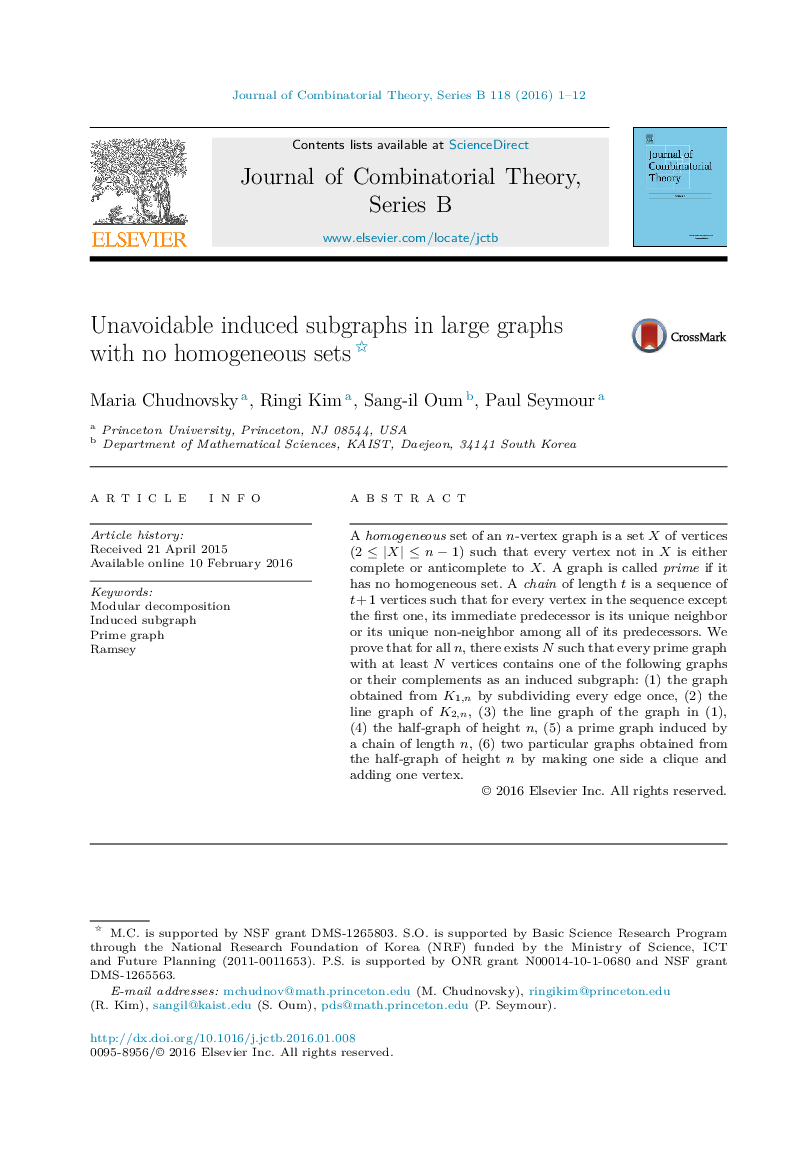| Article ID | Journal | Published Year | Pages | File Type |
|---|---|---|---|---|
| 4656703 | Journal of Combinatorial Theory, Series B | 2016 | 12 Pages |
A homogeneous set of an n-vertex graph is a set X of vertices (2≤|X|≤n−12≤|X|≤n−1) such that every vertex not in X is either complete or anticomplete to X. A graph is called prime if it has no homogeneous set. A chain of length t is a sequence of t+1t+1 vertices such that for every vertex in the sequence except the first one, its immediate predecessor is its unique neighbor or its unique non-neighbor among all of its predecessors. We prove that for all n, there exists N such that every prime graph with at least N vertices contains one of the following graphs or their complements as an induced subgraph: (1) the graph obtained from K1,nK1,n by subdividing every edge once, (2) the line graph of K2,nK2,n, (3) the line graph of the graph in (1), (4) the half-graph of height n, (5) a prime graph induced by a chain of length n, (6) two particular graphs obtained from the half-graph of height n by making one side a clique and adding one vertex.
